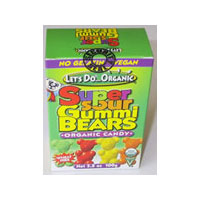Readers of The Heart Scan Blog know that I preach a diet that contains foods with low glycemic index to control weight, raise HDL, and reduce triglycerides, blood sugar, and small LDL.
A crucial aspect of a low glycemic index approach is to sharply reduce, preferably eliminate , wheat products.
I pick on wheat specifically because it has come to dominate the American diet. Look at the shelves in the supermarket: aisle after aisle of processed wheat products. The bread shelves alone in some of the grocery stores in my neighborhood are 40 feet long, six shelves high. There's also breakfast cereals, granola products, cookies, cakes, baking products, pretzels, crackers, pasta, and on and on.
Wheat products like these are tasty and they're addicting--literally . Test animals given processed wheat will eat more and gain more weight. Wheat fails to trigger satiety. So laboratory mice--and you and I--eat and eat, because eating wheat stimulates appetite, creates a hunger for more wheat, and a vicious cycle ensues. Eliminating wheat, on the other hand, results in dramatic drop in appetite, substantial weight loss, followed by correction of the metabolic disruptions it created.
A quick Google search for "gluten-free" turns up a startling array of wheat-free, gluten-free, yet high glycemic index products. The breakfast cereal pictured, for instance, can do as much damage as most wheat containing products--though it won't cause gluten enteropathy (also known as "celiac disease").
The product shown contains:
Brown rice flakes , rice bran, evaporated cane juice , brown rice syrup , raisins , cinnamon, gum arabic, vanilla, molasses, ground flaxseed, rosemary extract.
A 1/2-cup serving contains:
Total Carbohydrate 31g
Dietary Fiber 5g
Sugars 8g
And I'll bet that most people eat a lot more than a half-cup serving.
But you and I are not laboratory mice. If deprived of wheat, many people will then seek out processed rice products (rice cakes, Rice Krispies), processed cornstarch or cornmeal products (tacos, cornbread, many processed foods using these products for texture or thickness), or other products labeled "gluten-free."
Going wheat-free for our purposes is not about avoiding the gluten in wheat. It is about seizing control of appetite, eliminating a food that disrupts insulin responses, reduces HDL, raises triglycerides, and creates small LDL particles. But this applies to processed corn, rice, and other high glycemic index foods, as well.
So, occasionally, someone will declare, "I've eliminated wheat! Now I only eat rice, corn, and I've discovered all the gluten-free alternatives!"
Unfortunately, they've traded one evil for another. So it's not just about wheat. It's really about reducing or minimizing foods that mess up metabolic responses and lead to coronary plaque growth. Wheat is the biggest culprit and so I focus on it. However, you could easily transfer far less popular rice and corn products into center stage and allow them to wreak all the health damage of wheat.
Going wheat-free for our atherosclerotic plaque-control purposes is not the same as going gluten-free. So be careful of the distinction.
Wheat-free gummi bears:

Contents:
Organic dehydrated cane juice, organic corn malt syrup, organic juice concentrates (may contain organic apple, organic apricot, organic aronia, organic carrot, organic cranberry, organic elderberry, organic lemon or organic red beet), organic spinach powder, organic apple pectin, citric acid, natural fruit flavors.
Virtually pure sugar--yet wheat-free.
Wheat-free rice bread

Ingredients:
White rice flour, water, honey, soy oil, natural gum, salt, yeast, natural gum
Copyright 2008 House, MD